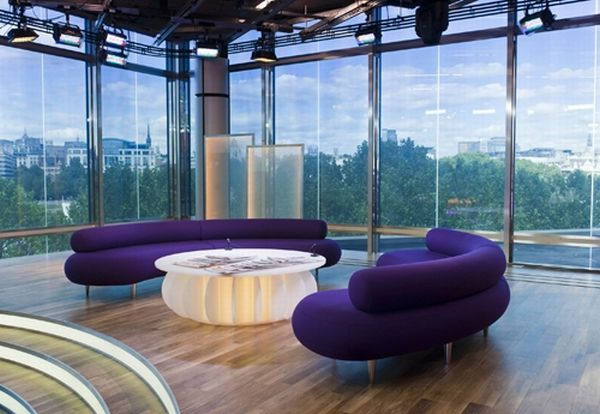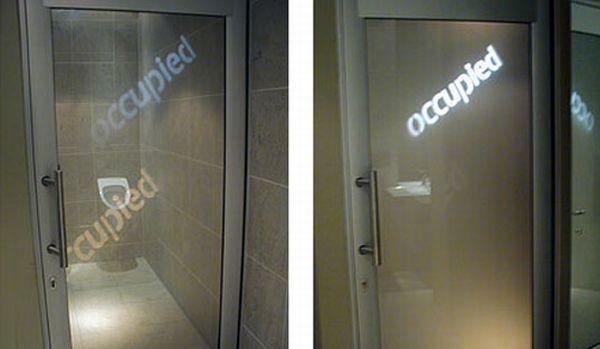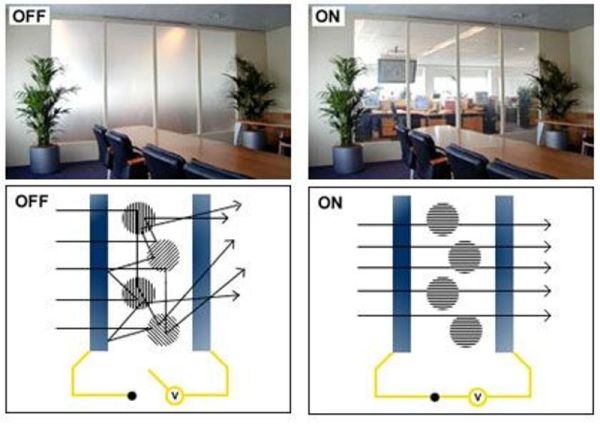The ability of the smart glass to change its state from being opaque to translucent, and transparent at the flick of a switch or a remote control makes it very useful in producing clutter-free environment in your home. The smart glass technology allows manufacturing of up to 10 feet x 10 feet single smart glass panels, which means they can be used in offices too, where huge panels are usually employed and are not protected from the sun, which can drive up the electricity bill for air-conditioning and expose the occupant to harmful UV radiations. Use of smart glass can not only improve the aesthetics of your home or office windows, they might be the curtains and blinds of tomorrow.

The good:

You get on demand privacy, and it helps you save on heating, lighting and cooling bills
Smart glass provides the functionality of instant privacy, where you can switch the glass from a transparent state to a complete opaque state with a flick of a switch. The smart glass panels are manufactured with a lamination process wherein a PDLC (Polymer Dispersed Liquid Crystal) film is sandwiched between two or more glass sheets. Applying a small voltage across the glass sheets will turn the glass from opaque to transparent and vice versa.
The lamination process of the smart glass with special particles also help in controlling the amount of light, heat and glare from passing through, which helps to reduce the need of air-conditioning during the summer season and heating during winters. This can help you to save on your monthly electricity bill.
The bad:

Glass responds slowly to state change
The downside of this technology is the time taken by the glass to go from one state to the other. The darkening of the electrochromic glass occurs from the edges that moves inwards, and is a very slow process that can last from several seconds to many minutes depending on the size of window.
The smart glass also suffers from limited lifetime cycle, and from ‘iris’ effect, where the color of the outer edges of the window begins to change, and then moves towards the center. The liquid crystal glasses are either transparent or opaque, without a proper translucent state. They merely scatter light particles rather than completely block them, this can also have implications where absolute privacy is required.
The ugly:

The glass panel requires constant supply of voltage
The smart glass panel made with the suspended particle device technique or the liquid crystal technique requires a constant supply of voltage in order to keep the state of the glass in transparent mode, which might not be a very efficient way of utilizing electricity. But, in contrast, it offers a quicker transition between states compared to other type of techniques employed to make the smart glass.
The Bottom Line
Smart Glass is a great technological breakthrough that can provide your house and office a designer look. This technology can be a boon for many interior designers, architects and fashion conscious people. This technique can also help improve the aesthetics to make your home look more spacious. It consumes very little energy and instead, offers the benefits of the next generation of window curtaining.
As any product, these panels also have have their fair share of caveats. There are many processes to manufacture these smart glass panels, but except for one or two methods, others are highly energy efficient and can be widely adopted and used once their cost of production is brought down, with mass production. But, as we move towards a more aesthetic and space conscious trend in urban living, such technologies surely stand the chance to disrupt the usual way of curtaining our windows.




